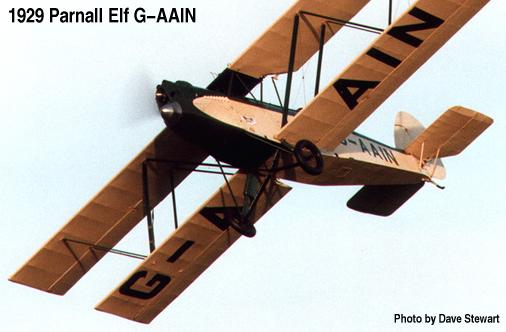
Apart from the sad mishap, one can also see an earlier paint scheme of D-EABT in this picture: standard red or brown pinstriping with a thin non-standard stripe between the two wider ones alongside the fuselage.
To suit the needs/limitations of users with different Internet access speeds, the pictures are displayed on this page as thumbnails to reduce loading time. Click on the links to see the photo in approx. 1024x700 pixel size (between 130 and 170 kB each).
But first, a shot of a ....

Ok, here you are and ask yourself what this old but beautifully restored biplane has to do with Herbert Jöschs' Jodel DR.1050 D-EABT ? So read on, I'll let you know in a little bit ...
Jodel DR.1050 s/n 209 was built as F-BJUI in 1961 by CEA. Sometime later the aircraft was exported to Germany and re-registered as D-EABT. Unfortunately little is known of the period before 1970 as all logs of the aircraft prior to that time are lost. In the following years D-EABT had a few mishaps, among them a collision with a parked car in 1975/76 (see pictures below). Perhaps after repairing the damage caused by this accident, but possibly also considerably later(between 1975 and 1994), D-EABT was repainted in the color scheme seen in picture (2). Sometime after the accident, about 1977, the aircraft was sold again to a new owner. He kept the aircraft for the next 17 years and flew it quite a bit - one could say that there are only very few airports in Germany which D-EABT didn't see during this time. Naturally, all this flying took its toll on the condition of the aircraft, which gradually worsened over the years.
Bring in Herbert Jösch, owner of a Bölkow Junior in 1994 which shared the same hangar with D-EABT. Herbert was offered to buy the aircraft because the previous owners wanted to step up to something bigger (IFR-capable). Because of the rather sad condition of the aircraft, he didn't want to buy her at first. But upon closer inspection sometime later, he became fascinated with her (perhaps due to the bent wings ?!). Supporting the idea to acquire D-EABT was the fact that a new family member had arrived recently on the scene, so they could no longer all three fly together in the (two-seat) Junior. He was contemplating the idea for a while and thought about how to buy and restore the aircraft. Due to the several smaller incidents in the preceding years already mentioned, and this combined with the interior looks of the cockpit convinced him that the aircraft was ready for a full restoration. At the time, a mechanic willing to support the project was still working at the airport. So finally, Herbert made an offer for the BT and found himself soon to be the new owner. Before starting with the restoration, he first flew BT a couple of times to become accustomed to the tailwheel landing gear.
This way, a few weeks passed before the mechanic told him that he wouldn't be able to help with oversight of the project contrary to his earlier statement. After searching for a while for help and knowledge for the restoration, he found both (on advice of the other mechanic) in the person of Horst Bless in late 1994. D-EABT was then disassembled and transported to Horsts' shop, where the restoration started with complete exterior and interior stripping. Apart from some water damage to the wing trailing edge and some other minor stuff, the airframe was basically in sound condition. Work progressed pretty fast despite the fact that the interior including the instrument panel had to be redone completely. The restoration was finished around mid-year 1995. The next day, Herbert packed his tent and set off for few days touring France ... Dijon, Gap, Bordeaux, Vannes, Chartres, Reims - with a bunch of small grass fields in between. Since then, Herbert has flown the aircraft over 500 hours, with lots of long trips especially to France.
Below, one can find various pictures of D-EABT, mainly taken during the restoration 1994/95. The difference between the 'looks' of the aircraft before and after the work mainly done by Horst Bless is pretty obvious! I had the opportunity to inspect the aircraft personally during the Nordenbeck Jodel Fly-In on July 1/2 and can confirm that D-EABT still looks like the restoration was done a couple of weeks and not a couple of years ago.

|

|

|
| (2) Paint scheme and appearance of D-EABT before the restoration (Summer 1994) | (3) Paint scheme and appearance of D-EABT after the restoration (Ploërmel, Bretagne, France, 11 Aug 1995). The paint scheme was patternd after the one of the English biplane Parnall Elf built in 1929 and now part of the Shuttleworth Collection (in flying condition!) by Horst Bless, the rebuilder/restorer of D-EABT (by the way, his own Jodel is painted in the same color scheme!). |
(4) D-EABT in March 1999. Still looking like new! Compare the paint scheme to the one of the Parnall biplane picture at the top of this page! |
All pictures on this page copyright 1994-2000 by Herbert Jösch!